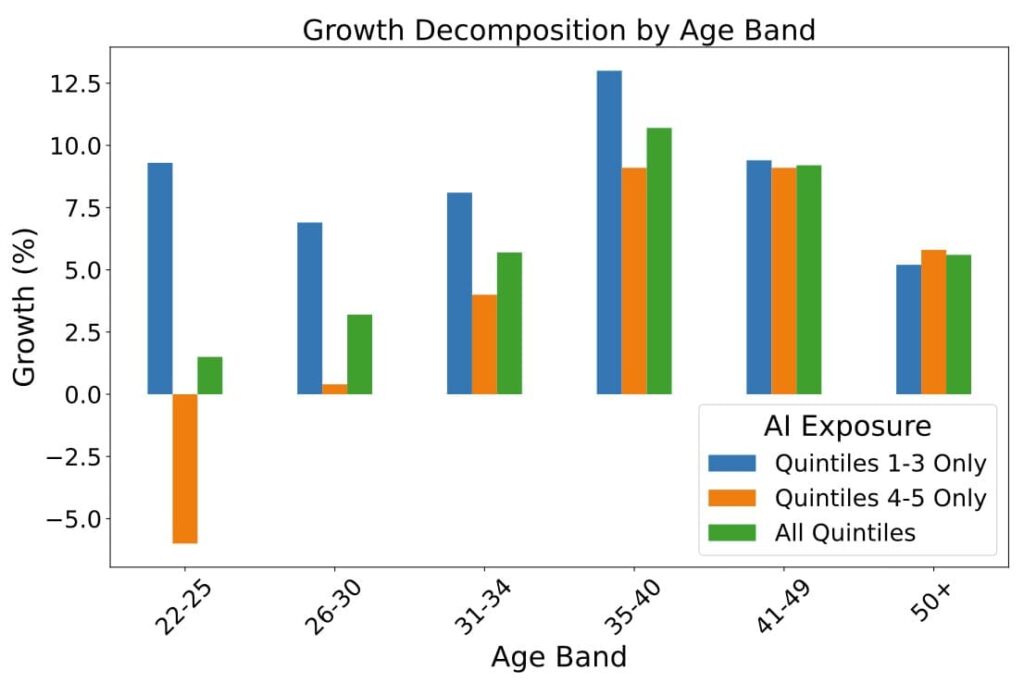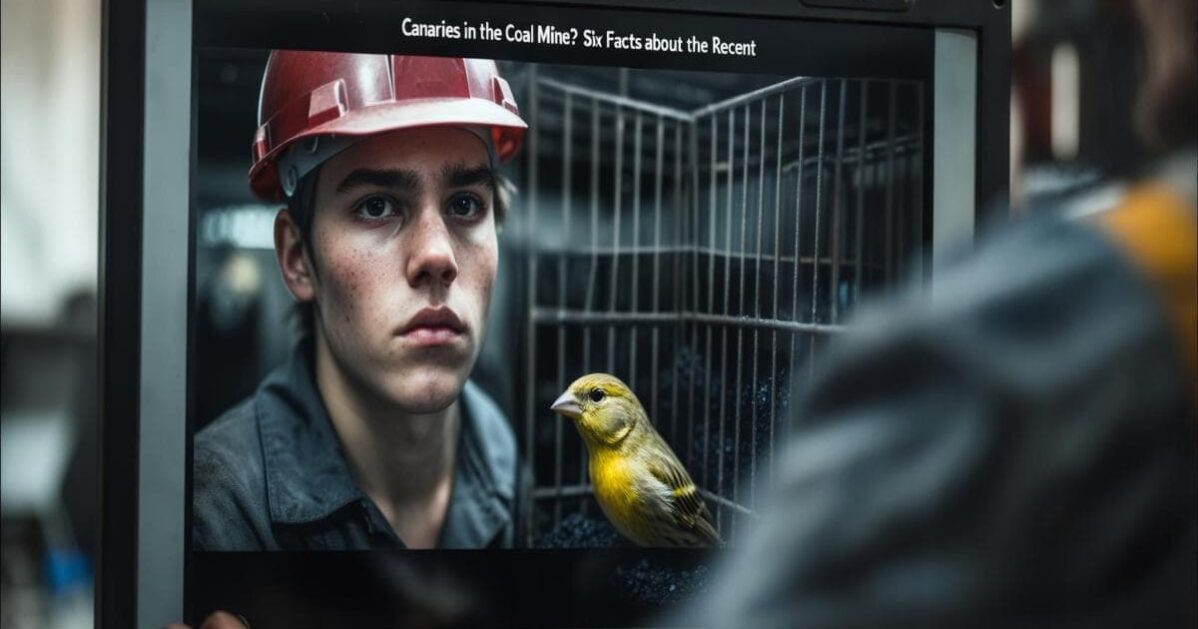Canaries in the coal mine?
Clear and straightforward reading on how AI is affecting youth employment. Based on large-scale administrative data (ADP) and recent AI exposure metrics.
Six facts about AI and youth employment
Generative artificial intelligence is changing which jobs are growing and which are shrinking. The impact is not the same for everyone: it varies by age, occupation and technology use.
1. Younger people are losing more jobs in exposed positions.
Between 22 and 25, in occupations with high exposure to AI (such as software development or customer service), employment falls by around 13% on a relative basis, even controlling for company shocks.
2. The economy is adding jobs, but young people are stagnating
Total employment remains strong; however, for the youngest, growth is slowing. In the most exposed occupations, the 22-25 year olds are down ~6% from the end of 2022, while the 35-49 will go up by more than 9%.
3. Automating is not the same as scaling up
AI reduces employment when automates tasks; this is not the case when increases human labour. In occupations with automated use, youth employment falls; in the more "augmentative" occupations, it grows.
4. It's not just about companies or sectors.
Controlling for firm-specific and time-specific effects, the pattern holds: for 22-25 years there is a fall in 12 log points in relative employment in the most exposed quintiles versus the least exposed.
5. The adjustment is more noticeable in employment than in wages.
Salaries show little variation by exposure or age in the short term. The difference is in how many positions there are, not so much in how much is paid.
6. Robust pattern in different contexts
The result is repeated outside the "tech world" and in non-teleworkable positions. It also appears in multiple sample constructions.
Why does it hit beginners the hardest?
AI is a better substitute for codified knowledge (what you learn in books/uni) that the tacit knowledge (tricks of the trade). Young people bring more of the former, so they are more substitutable. Experience is more protective in occupations with high rewards for learning on the job.

Illustrative cases
Highly exposed occupations
Software development, customer service, accounting and some administrative roles: falling among the youngest after 2022.
Low-exposure occupations
Health assistants, maintenance, warehouse workers: stable or rising employment for young people.
What you can do if you are starting out
1) Choosing "augmentative" tasks
Look for roles where AI make you better (validation, iteration, guided learning) rather than replacing you.
2) Developing tacit knowledge
Real practice, solving ambiguous cases, dealing with clients and coordinating teams: skills that are difficult to automate.
3) Learning to work with AI
Integrate AI into your workflow: define tasks, check results and improve the process. Whoever masters the tool keeps the upper hand.
Conclusion
AI is a "canary in the mine".The immediate challenge is in entry-level jobs. The immediate challenge is in entry-level jobs. The way out is to orientate work towards tasks where AI increaseno replaceand for accelerating learning in tacit knowledge.
